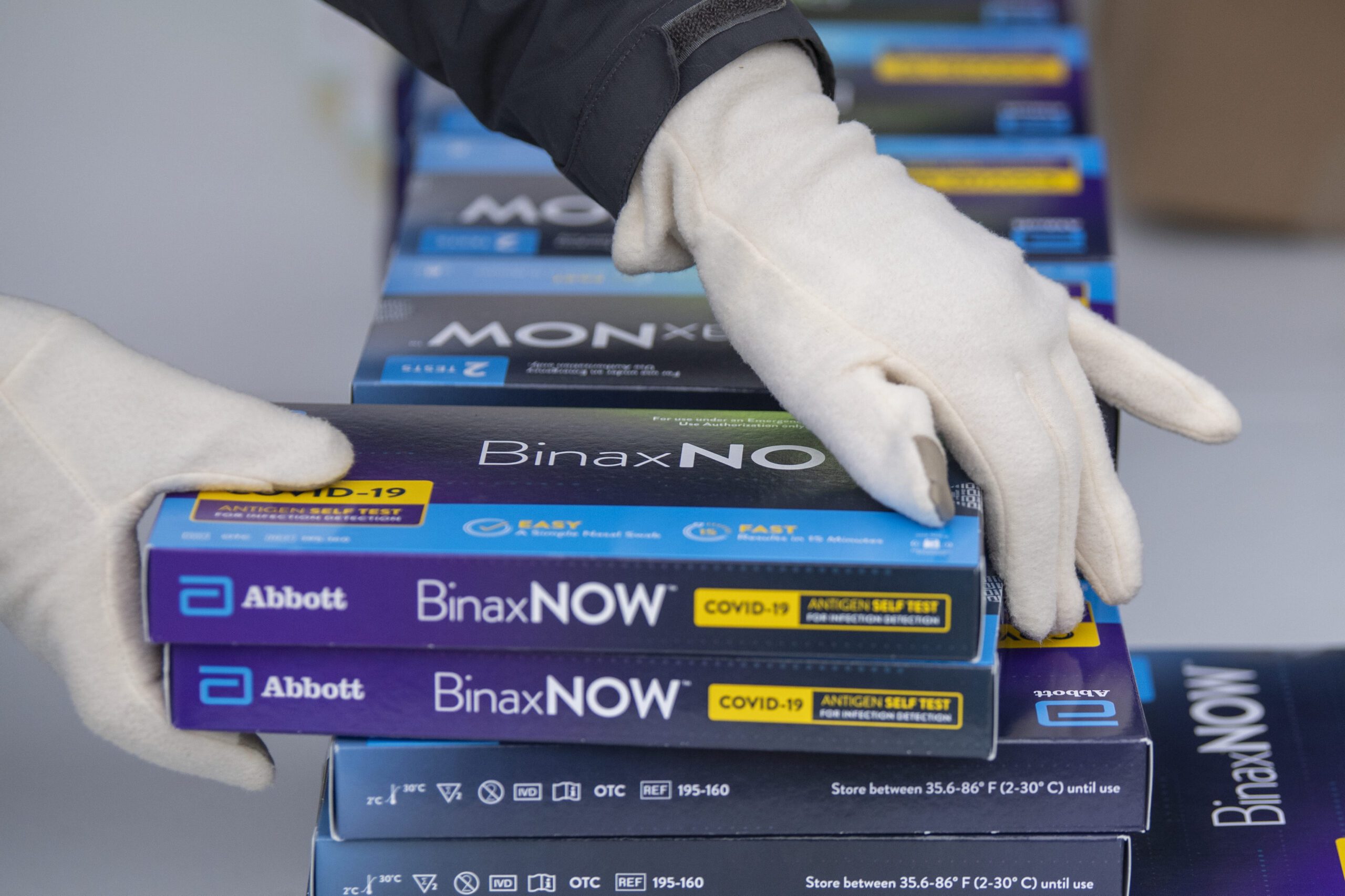MDH: At-home COVID tests not included in state data
[anvplayer video=”5082628″ station=”998122″]
Minnesota’s daily COVID-19 case numbers will be “less useful” due to the rise in people taking at-home tests, according to state health officials.
“None of the at-home test results get included in state data. We only get laboratory-confirmed tests,” MDH Infectious Disease Director Kris Ehresmann said.
MDH did not have an estimate for how many at-home tests have been sold or used in Minnesota, but Ehresmann noted the state distributed 1 million rapid tests to schools last month.
“And we are providing another 1.8 million at-home rapid tests to schools to give to families, so that’s quite a few tests. And then you have all the tests that people are purchasing for their own use as well,” Ehresmann said.
Since at-home tests are not reflected in the state data, Ehresmann recommended looking at patterns and trends when assessing the spread of the virus in Minnesota.

FILE - Youngstown City Health Department worker Faith Terreri grabs two at-home COVID-19 test kits to be handed out during a distribution event, Dec. 30, 2021, in Youngstown, Ohio. Starting Saturday, private health insurers will be required to cover up to eight home COVID-19 tests per month for those on their plans, the Biden administration announced Monday, as it looks to lower costs and make testing for the virus more convenient amid rising frustrations. (AP Photo/David Dermer, File)
The state reported the positivity rate of diagnostic testing reached a pandemic record of 16.6% in the seven-day period ending Dec. 31, indicating substantial spread.
“We look at what’s happening in schools, what’s happening in long-term care facilities. Those give us a window on what’s happening in the broader community,” Ehresmann said.
Dr. David Hilden, an internal medicine physician at Hennepin Healthcare who treats COVID-19 patients, suggested looking at other metrics as well, including hospitalizations and deaths.
He said we have to wait and see how the spread of the omicron variant will play out in Minnesota.
“We know the omicron variant is very transmissible. In other words, it’s just highly contagious. I think it’s very likely the official test results will skyrocket up in the next few weeks. We know that because it is so contagious. And even though it’s less severe, so many people are going to have it that it is likely hospitalizations are going to go up and deaths are going to go up,” Hilden said.
He noted many of his patients in the hospital right now have better outcomes than a year ago, which may be due to a combination of factors, such as the potentially less severe omicron variant and improved treatment options.
“Our ICUs are full. They are completely full, but they are not full of ventilated COVID patients like they were a year ago. The thing that is different is that they are less sick but they are also younger and those that are the most sick are the unvaccinated,” Hilden said.
He urges Minnesotans to take proper steps to protect themselves and others, including masking, distancing and vaccination.
Hilden hosts the Healthy Matters podcast through Hennepin Healthcare, breaking down the latest data and answering questions about COVID-19 from Minnesotans. You can listen to recent episodes here.